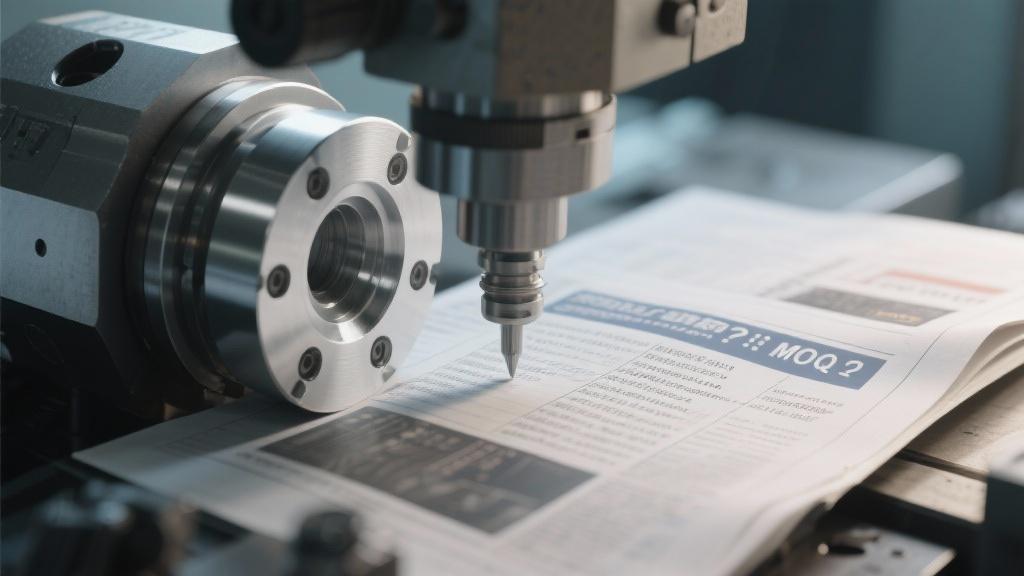Understanding MOQ in Aluminum Machining
When we talk about the minimum order quantity (MOQ) in aluminum machining, it’s not just a product of supply and demand; it’s influenced by a lot of factors that can affect your bottom line. Generally, the MOQ is the smallest quantity of products you must order from a supplier to make a purchase financially viable for them. In the realm of aluminum machining, having clarity on this number can save both time and money.
The optimal MOQ can vary widely depending on several key factors: the complexity of the parts being produced, the material costs, the manufacturer’s setup costs, and even the specific capabilities of your machining supplier. Typically, for small to medium-sized orders, the MOQ can be anywhere from 100 to 500 units, but it can be higher or lower depending on the specifics of your project.
Factors Influencing MOQ
Making Informed Decisions
So, how do you navigate the waters of MOQ for aluminum machining? It’s essential to communicate openly with your suppliers. Don’t hesitate to negotiate the MOQ based on your specific needs. Many suppliers value long-term relationships and may be willing to work with you to find an arrangement that suits both parties.
Keep in mind that understanding your own needs, the nuances of the parts you require, and how those align with your supplier’s capabilities will allow you to make informed decisions. It could also improve your chances of optimizing your overall costs and lead times.
With all these factors in mind, the quest for the optimal MOQ becomes less daunting. Take your time to assess, analyze, and collaborate with your suppliers to find a mutually beneficial solution that supports your business objectives.
What are the typical MOQs for aluminum machining?
Typically, the minimum order quantity for aluminum machining can range from 100 to 500 units. This can vary depending on factors such as the complexity of the parts and the capabilities of your chosen supplier.
For simpler parts, you might find that some suppliers are willing to accommodate orders on the lower end of that scale, but for intricate designs, expect to hit that higher range to justify the manufacturing costs.

How can I negotiate the MOQ with my supplier?
Negotiating the MOQ with your supplier is all about clear communication. Start by explaining your project needs and how they align with their capabilities. A good supplier may be open to adjusting their MOQ if they see the potential for a long-term relationship.
Additionally, sharing your budget and timeline constraints can help the supplier understand your perspective, and they might be more willing to work with you to find a mutually beneficial arrangement.
Does the complexity of a part influence the MOQ requirement?
Absolutely! The complexity and customization of a part play a significant role in determining the MOQ. More intricate designs typically require more time and resources for setup, which can drive up the MOQ.
If you have highly detailed or customized parts, you should expect a higher MOQ due to the additional work involved in production. Simplifying the design could help in reducing the MOQ if that aligns with your project requirements.
What factors should I consider when evaluating suppliers for their MOQ?
When evaluating suppliers for their MOQ, consider their production capabilities, the complexity of your parts, and their history of flexibility with order sizes. A supplier that specializes in custom or low-volume projects might have a lower MOQ compared to one focused on high-volume production.
It’s also worth looking into their lead times and how they fit into your project’s timeline. Flexibility in these areas can significantly influence your decision-making process.
Can I expect the MOQ to change over time?
Yes, the MOQ can change based on market conditions, production capacities, and material costs. For example, if there are fluctuations in aluminum prices, suppliers may adjust their MOQs accordingly to maintain profitability.
It’s a good idea to stay in contact with your suppliers and keep abreast of any changes in their policies, as being proactive can help you adapt your orders to align with their changing requirements.



